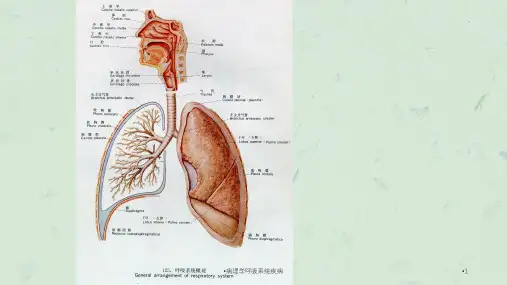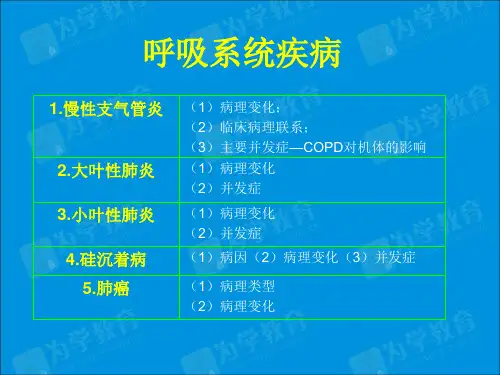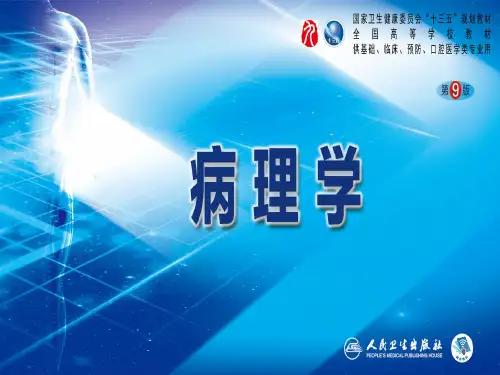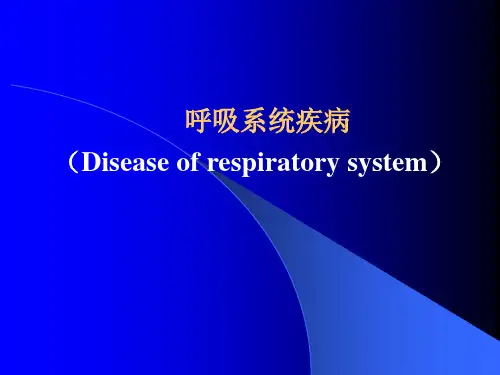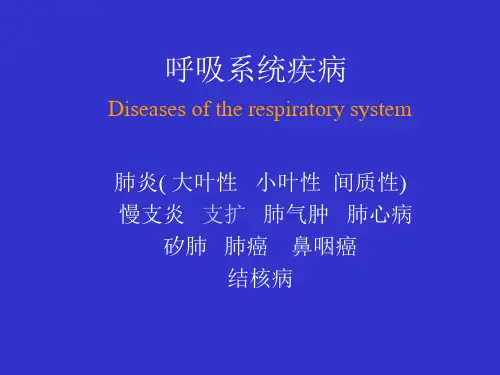–感染性因數 細菌,病毒,支原體,真菌,寄生 蟲
–理化性因數 吸入性,放射性, 過敏性
1. 細菌性肺炎(bacterial)
1)大葉性肺炎 (Lobar pneumonia) 主要由肺炎鏈球菌引起的累及肺
大葉範圍、以肺泡內彌漫性纖維素滲 出為主的急性炎症
病因及發病機制
病因:肺炎鏈球菌 (90%以上) 少見的有肺炎桿菌、金黃葡球菌、 溶血鏈球菌等
肉眼:實變的肺組織質地變軟, 病灶消失,漸近黃色,擠壓切面可見 少量膿樣混濁液體溢出; 中性粒細胞 壞死 → 釋放蛋白溶解酶將纖維素溶 解、病原體被吞噬溶解
臨床特點
• 青壯年 • 起病急 • 寒戰發燒、咳嗽、胸痛、
呼吸困難 • 咳痰,痰呈鐵銹色 • 肺實變體征, 外周WBC↑
併發症(complications)
Pneumonia
• Pneumonia is pulmonary infectious diseases caused by different etiologic agent invasion of the lung parenchyma. Many variables, such as the specific agent, the host reaction, and the extent of involvement, determine the precise form of pneumonia. Thus, classification can be made according to etiologic agent, (e.g., pneumococcal or staphylococcal pneumonia), the nature of the host (e.g., suppurative, or fibrinous), or the gross anatomic distribution of the disease (lobar pneumonia vs lobular or bronchopneumonia).
